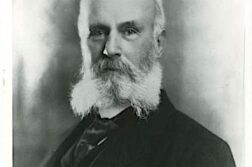MY FAVORITE HOTEL in Havana is the Inglaterra, overlooking the Parque Central, one of Havana’s oldest gay cruising areas. It has been operating as a hotel since 1856, which probably makes it the oldest continuously operating hotel in the city. It had Old World charm, however run-down, especially during the first years of my stay in the mid-1990s, before old Havana started to be renovated with the support of unesco. The fact that Cuba’s most respected military general, the “Bronze Titan,” Antonio Maceo—allegedly the only soldier in history to survive 24 bullet wounds—stayed there in 1890 was less exciting to me than the fact that Federico García Lorca did so on a rainy night in 1930. Did Lorca, whose Cuban experience brought out homoerotic elements in his work, note the clandestine cruising activity in Parque Central opposite the hotel?
Lorca’s visit, his fascination with Cuba, and his interest in both Cuban music and homoerotism have been a great inspiration for me throughout my own Cuban experience. I was therefore delighted to stay at a hotel that he visited, and later on to walk into the García Lorca Auditorium in the majestic Gran Teatro de La Habana, home of the Ballet Nacional de Cuba, next-door to the Inglaterra, while conducting field research on Cuban ballet in the early 2000s. This research included in-depth interviews with Cuban gay men who agreed to be part of my research.

THE BALLET NACIONAL DE CUBA is considered one of the world’s leading classical ballet companies. According to Sanjoy Roy, dance critic for The Guardian (London), it “fields world-class dancers while remaining culturally isolated from the wider ballet world” (March 16, 2010). It was founded in 1948 by Cuban prima ballerina Alicia Alonso, who, in spite of being in her eighties and almost blind, was still serving as the ballet’s director until the early 21st century.
Ballet is a highly valued and pampered art form in Cuba—the Ballet Nacional de Cuba above all others.







